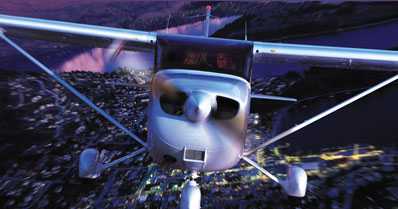The (Aileron) Pulley Did Not Rotate Freely, And Corrosion Was Noted
Location: Lake Worth, FL Accident Number: ERA23FA247
Date & Time: May 26, 2023, 11:18 Local Registration: N3KV
Aircraft: Cessna 172 Injuries: 2 Fatal
Flight Conducted Under: Part 91: General aviation - Instructional

On May 26, 2023, at 1118 eastern daylight time, a Cessna 172P, N3KV, was destroyed when it was involved in an accident at Palm Beach County Park Airport (LNA), Lake Worth, Florida. The flight instructor and student pilot were fatally injured. The airplane was operated as a Title 14 Code of Federal Regulations (CFR) Part 91 instructional flight.
According to airport security video, the airplane from departed runway 4, rotated and began to climb. Then, it descended and began to climb again. It then rolled right until it was in an approximate 90° right bank and continued in a right descending turn until it impacted the ground. A pilot who witnessed the accident reported that the airplane’s engine “sounded like it was full throttle the entire time.”
The airplane impacted the ground about 200 ft from runway 16/34. The debris path was oriented on a 006° heading and the airplane came to rest about 140 ft from the initial impact point at an elevation of 16 ft mean sea level. All major components of the airplane were located within the vicinity of the main wreckage.
The engine remained partially attached to the fuselage through the engine mounts. Crankshaft and valve train continuity were confirmed by rotating the crankshaft by turning the vacuum drive gear. Compression was confirmed on all cylinders. The cylinders were examined with a lighted borescope and no anomalies were noted. The magnetos were rotated by hand and produced spark on all leads. The carburetor was examined, and no anomalies were noted. No debris was noted in the oil filter or the oil pickup screen. There were no anomalies found with the engine that would have precluded normal operation.
The fixed pitch propeller remained attached to the crankshaft flange and the two blades remained attached to the hub. One propeller blade was bent forward about mid-span and exhibited chordwise scratching, and the other propeller blade was twisted and exhibited chordwise scratching.
The cockpit was impact crushed aft and multiple instruments were separated from the panel and damaged. The empennage remained partially attached to the fuselage. Elevator and rudder control continuity were confirmed from the flight control surfaces to the flight control yoke in the cockpit. The left wing was impact separated from the fuselage. The outboard 6-foot section of the left wing was impact crushed aft, and the wing tip was impact separated and located along the debris field. The right wing was impact separated from the fuselage. The outboard 5-foot section of the wing tip was bent in the positive direction and crushed aft. The wing tip was impact separated from the right wing and located along the debris path. The right-wing tip light lens cap was located at the initial impact point.

Aileron control continuity was not confirmed. A separation was noted in the aileron control system in the vicinity of the left upper door post right direct aileron cable pulley. The pulley was removed, examined, and exhibited corrosion. The pulley did not move freely.
The right upper door post left direct aileron over pulley was removed and examined. The pulley did not rotate freely, and corrosion was noted. Several other breaks noted in the aileron control system were consistent with tension overload failures.
According to the owner of the flight school, the airplane was purchased on May 4, 2023.
According to the airframe maintenance logbook, the airframe had accumulated 5,025.5 hours at the time of the accident. The most recent annual inspection was completed on September 22, 2022, at a tachometer time of 4,970.4 hours. There was an affidavit from the previous owner that indicated the original maintenance logbooks were lost, and when they were located, they would be given to the new owner.
 ANN's Daily Aero-Linx (05.02.24)
ANN's Daily Aero-Linx (05.02.24) ANN's Daily Aero-Term (05.02.24): Touchdown Zone Lighting
ANN's Daily Aero-Term (05.02.24): Touchdown Zone Lighting Aero-News: Quote of the Day (05.02.24)
Aero-News: Quote of the Day (05.02.24) ANN FAQ: Contributing To Aero-TV
ANN FAQ: Contributing To Aero-TV NTSB Final Report: Cirrus Design Corp SR20
NTSB Final Report: Cirrus Design Corp SR20




